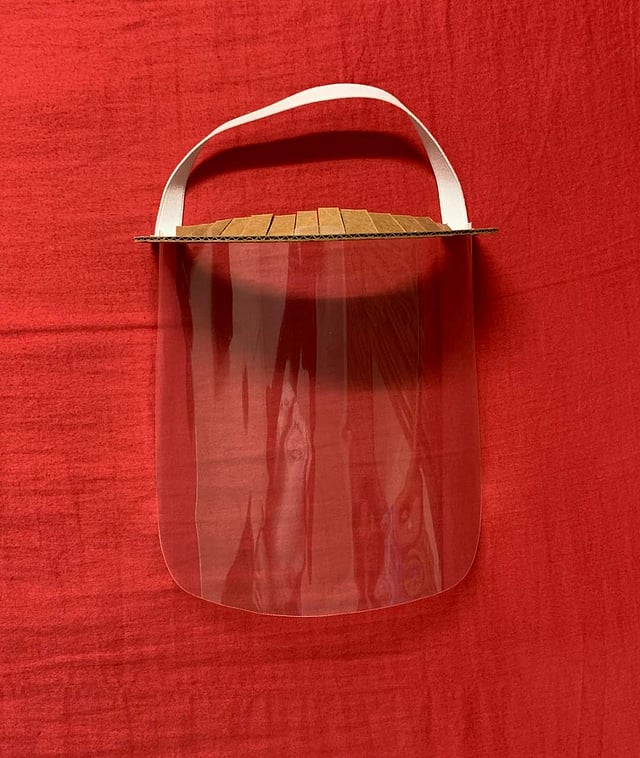

A protective film, 3-ply coregulated cardboard and a unique interlocking system — a combination of these three things is what it takes to make a low-cost yet highly-effective face shield. Of course, it took P Mohan Aditya's deft hands to make all the three come together in a way that he has even received a patent for it — and he tell us that it won't harm the environment one bit.
Ladies and gentleman, introducing Face Shield 2.0.
1.jpeg?w=640&auto=format%2Ccompress)
Remember when we just started to hear about the deadly Coronavirus last year and then the shortage of PPE kits followed, that's when this SRM-AP student started working on the new and improved face shield. "I was reading many articles about the environmental damage caused by the irresponsible disposal of masks and face shields. So I wanted to work on an eco-friendly one," says the third-year Mechanical Engineering student. That's how the idea of using 3-ply cardboard for the headband came in, 4 or 5 would have just upped the price unnecessarily, but 3 is just enough to keep the framework strong. It has a bursting strength of 16 kg/sq cm. The interlocking system is such that if the cardboard wears down, you can just detach it and attach it to a new headband. "The front of the headband is frayed which makes it easier to wear. Plus, it can be worn for longer periods of time. Even if it gets sweaty towards the end of the day, it dries up by the morning," explains the 22-year-old.

In June last year, Aditya even distributed 500 of these face shields to frontline workers to test the viability and used it for one week himself. "Using sponge to make the headband more comfortable would have added to the cost but the frayed bit helps with that," says the Guntur-born. To use 3D printing techniques wouldn't have been feasible either. Hence, the transparent visor was designed using CAD software which was then used as an input to the CNC machine that analysed and cut the cardboard and transparent sheet as per the design. This is what brings the cost of each mask to Rs 15.
But there a whole lot more to him. Aditya and his friends have turned a ten-year-old internal combustion bike into an EV with retrofitting in the past. He is also lead guitarist in the band Black Sparrow and dabbles in photography. He intends to keep innovating in the future as well.
